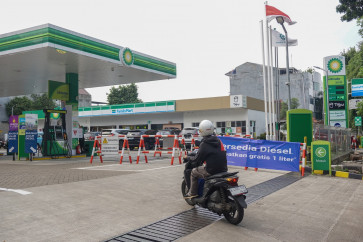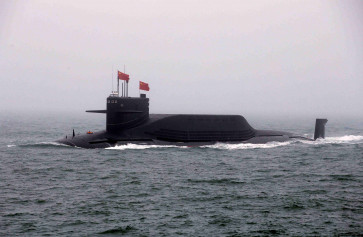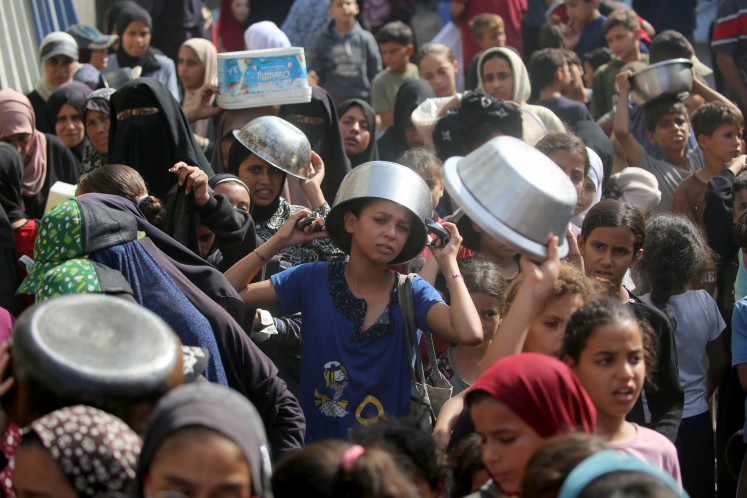Popular Reads
Top Results
Can't find what you're looking for?
View all search resultsPopular Reads
Top Results
Can't find what you're looking for?
View all search resultsTropical storm Magda could hit parts of Indonesia
The Meteorology, Climatology and Geophysics Agency (BMKG) has issued a warning to the public about the possible impact of tropical storm Magda in certain parts of Indonesia between Jan
Change text size
Gift Premium Articles
to Anyone
T
he Meteorology, Climatology and Geophysics Agency (BMKG) has issued a warning to the public about the possible impact of tropical storm Magda in certain parts of Indonesia between Jan. 22 and Jan. 25, 2010.
The BMKG said Magda was predicted to hit the eastern part of the country, especially Kupang in East Nusa Tenggara and Merauke, West Papua.
A swirl occurring above waters south of Kupang and a low pressure area southeast of Merauke would lead to a concentration of winds over an area stretching over the Java Sea, Bali Sea, West Nusa Tenggara, Banda Sea and Arafura Sea.
The process would eventually lead to the formation of clouds over the southern parts of Indonesia, according to the BMKG.
Antara reported that the BMKG disclosed that the storm would trigger heavy rainfall in several areas in Indonesia, followed by strong winds and thunder from Jan. 22 to Jan. 25.
The areas affected would include the central and eastern parts of Sumatra, areas spanning the west coast of Sumatra and the southern parts of Kalimantan, BMKG data showed.
Also falling prey to the same weather conditions would be Jakarta, Bogor, Depok, Tangerang, Bekasi in West Java, western and northern parts of Java, the southern part of Sulawesi, Bali, Nusa Tenggara, Southeast Maluku and central and southern parts of Papua.
An area of low pressure in the Southern Indian Ocean, located close to Australia's northwestern coast, was being watched for development on Thursday as the low pressure exploded into Tropical Storm Madga, according to NASA.
The Australian Government Bureau of Meteorology (AGBM) for Western Australia had posted a cyclone warning for coastal areas from Mitchell Plateau to Beagle Bay.
The AGBM expected gusty winds of up to 93 mph (150 kph) close to Magda's center Friday morning. Heavy rainfall was also expected as Magda continues to strengthen as it nears the coast.
Satellite imagery showed that convection (rapidly rising air that forms thunderstorms that power the tropical storm) around Magda's center had consolidated and strengthened.
That was a sign that Madga was getting stronger, and the forecasters were calling for further intensi-fication.
Meanwhile, ASEAN has agreed to a legally binding pact establishing national and regional structures to deal with disasters - the first of its kind.
"This is the Kyoto Protocol of disaster management. It's a watershed for all of us," Jerry Velasquez, senior regional coordinator for UN disaster agency UNISDR, was quoted as saying by www.alertnet.org on Friday.
The 10 members of ASEAN were forced to agree with the pact as the region is prone to natural disasters, such as typhoons, earthquakes, volcanic eruptions, landslides and tsunamis.
The region suffered 152 natural disasters in 2008, according to ASEAN, with the biggest being Cyclone Nargis which tore through Myanmar killing nearly 140,000 people.
More recently, a 7.6-magnitude earthquake hit Indonesia in October. Around the same time, successive typhoons battered the Philippines and flooded Vietnam, Cambodia and Laos.










